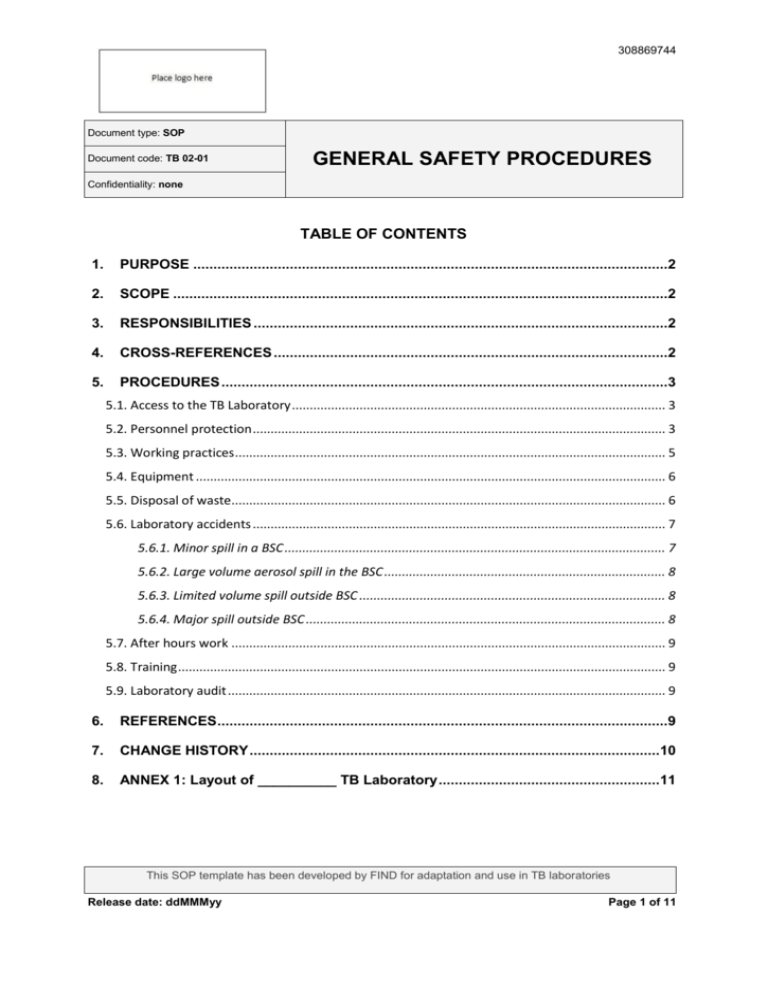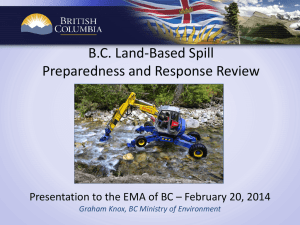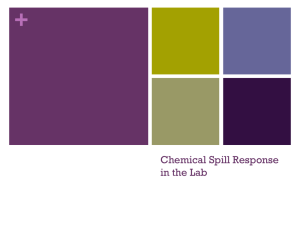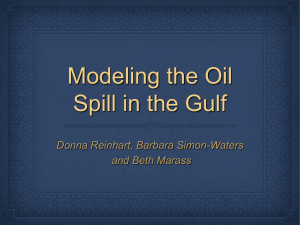General Safety Procedures
advertisement

308869744 Document type: SOP Document code: TB 02-01 GENERAL SAFETY PROCEDURES Confidentiality: none TABLE OF CONTENTS 1. PURPOSE ......................................................................................................................2 2. SCOPE ...........................................................................................................................2 3. RESPONSIBILITIES .......................................................................................................2 4. CROSS-REFERENCES ..................................................................................................2 5. PROCEDURES ...............................................................................................................3 5.1. Access to the TB Laboratory ......................................................................................................... 3 5.2. Personnel protection .................................................................................................................... 3 5.3. Working practices ......................................................................................................................... 5 5.4. Equipment .................................................................................................................................... 6 5.5. Disposal of waste.......................................................................................................................... 6 5.6. Laboratory accidents .................................................................................................................... 7 5.6.1. Minor spill in a BSC ........................................................................................................... 7 5.6.2. Large volume aerosol spill in the BSC ............................................................................... 8 5.6.3. Limited volume spill outside BSC ...................................................................................... 8 5.6.4. Major spill outside BSC ..................................................................................................... 8 5.7. After hours work .......................................................................................................................... 9 5.8. Training ......................................................................................................................................... 9 5.9. Laboratory audit ........................................................................................................................... 9 6. REFERENCES ................................................................................................................9 7. CHANGE HISTORY ......................................................................................................10 8. ANNEX 1: Layout of __________ TB Laboratory .......................................................11 This SOP template has been developed by FIND for adaptation and use in TB laboratories Release date: ddMMMyy Page 1 of 11 308869744 1. PURPOSE This SOP describes the methods of good laboratory practice to be employed while working with potentially infectious material or samples known to contain M. tuberculosis and other mycobacteria at the ___________ TB Laboratory. This SOP covers access to the laboratory, personnel protection, working practices and safe handling of specimens and disposal of waste. The procedure is necessary to reduce the chance of laboratory acquired infection and cross-contamination of clinical specimens or experimental samples. Tuberculosis is transmitted via aerosol droplets. Any procedure that involves the production of aerosols may increase the potential of transmission of M. tuberculosis within the laboratory. Most infections in the mycobacteriology laboratory can be attributed to the unrecognized production of potentially infectious aerosols containing acid-fast bacilli. All work performed with cultures or specimens suspected of containing M. tuberculosis must be performed in a Class II Biological Safety Cabinet (BSC). Studies have shown that particular laboratory manipulations yield aerosols that are potentially infectious and special care must be taken while performing these procedures (e.g. pouring of liquid cultures or supernatant fluids, centrifugation or using automatic pipettes). In addition to infection through inhalation, other routes of infection should also be considered. These include puncturing of skin with broken contaminated glassware, self-inoculation with a contaminated needle and infection through uncovered cuts and abrasions. 2. SCOPE This SOP covers all procedures carried out in the ___________ TB Laboratory. 3. RESPONSIBILITIES The Head of Laboratory is responsible for the provision of the necessary safety equipment, reagents and training required to provide a safe working environment, as well as regular health monitoring of staff in accordance with provisions made in the Health Monitoring procedure (TB 02-04). All staff members working in the ___________ TB Laboratory are responsible for the implementation of this SOP, including use of safety equipment and reagents as well as implementation of methods described herein. All users of this procedure who do not understand it or are unable to carry it out as described are responsible for seeking advice from their supervisor. 4. CROSS-REFERENCES See: Document Matrix_TB 02-01_V1.0.doc Laboratory Fire Safety_TB 02-08_V1.0.doc Location: Refer to SOPs listed under TB 02 (General Procedures), TB 03 (Specimen Handling) and TB 07 (Equipment Use and Maintenance). Page 2 of 11 308869744 5. PROCEDURES 5.1. Access to the TB Laboratory The international biohazard warning symbol must be displayed on the door to the specimen processing laboratory where specimens containing viable mycobacteria are handled. A diagram of the layout of the ___________ TB laboratory can be found in ANNEX 1. Only authorized personnel, stipulated by the Head of ______________TB Laboratory and shown in the Laboratory Access Authorization Table are allowed to enter the laboratory facilities. See: Laboratory Access Authorization Table_ddMMMyy.doc Location: Visitors to the laboratories should always be accompanied by a member of the laboratory staff. No children will be permitted to enter the laboratories under any circumstances. Laboratory doors should be kept closed at all times. Eating, drinking, applying cosmetics or storage of food or drinks is prohibited in the laboratories. 5.2. Personnel protection 5.2.1. Hand washing Personnel must wash their hands after handling infectious materials before leaving the working area. Hand wash basins are situated in the ante-room, processing laboratory and molecular laboratories. All cuts and abrasions must be covered using an adhesive plaster when entering and working in the laboratory. These are available in the first aid kit which is stored in the TB Laboratory. 5.2.2. Footwear Open-toed footwear must not be worn inside the laboratory working areas. Laboratory shoes or shoe covers should be worn in the TB Laboratory. Outdoor shoes should not be worn inside the laboratories (unless covered by shoe covers) and laboratory shoes must not be worn outside the appropriate laboratory. In case of use of laboratory shoes, these must be disinfected on a weekly basis using appropriate mycobactericidal disinfectant (e.g. soaking in bleach solution). 5.2.3. Safety glasses Safety glasses (goggles) should be worn when required to protect the worker from potential splashes or impacting objects, e.g. removal of tubes from the centrifuge. 5.2.4. Masks An N95 mask must be worn to enhance the personnel protection when performing experiments with potentially infectious materials and samples known to contain pathogenic mycobacteria. N95 Respirator masks will filter out greater than 95% of particles of 0.3um or greater. To don the mask, position it under the chin with the nosepiece up. Pull the top strap over the head so that it rests high on the back of the head. Pull the bottom strap over the head and position it around the neck below the ears. Pinch the nosepiece so that the mask fits snugly. Page 3 of 11 308869744 The mask must be replaced as soon as the user feels that breathing is becoming difficult. When not in use, store the mask in the separate plastic bag provided for each laboratory worker. Used masks must be disposed of in the biohazard waste box. 5.2.5. Surgical gowns Surgical gowns protect the skin and clothing from large droplets of infectious or hazardous materials that may be splattered. They must be fully fastened at the back and be worn when working in the BSC. Surgical gowns may be disposable or reusable. In case of use of reusable gowns, the gowns must be changed, autoclaved and washed on a weekly basis, or more often if necessary. Soiled or dirty gowns must be changed, autoclaved and washed immediately. Gowns must be sealed in an autoclavable bio-hazard bag. After autoclaving, gowns must be soaked in bleach and detergent and then washed in soapy water, dried and ironed. Gowns that have been used in the laboratory must not be stored in the same cupboards or lockers as street clothing. They must be stored on the designated hooks in the laboratory. Surgical gowns must be worn during all work with infectious material. Gowns must not be worn outside the processing laboratory, e.g. in communal areas, toilets, offices etc. 5.2.6. White laboratory coats White laboratory coats must be worn at all other times in the laboratory and while working with noninfectious materials outside the BSC. Three white laboratory coats are issued to each staff member, and these should be changed on a weekly basis when in use or more frequently if soiled. The laundering procedure for lab coats is the same as for surgical gowns (above). Laboratory coats that have been used in the laboratory must not be stored in the same cupboards or lockers as street clothing. They must be stored on the designated hooks in the laboratory. Laboratory coats must not be worn outside the processing laboratory, e.g. in communal areas, toilets, offices etc. 5.2.7. Latex gloves Latex gloves guard against infection through cuts and abrasions on the hands. Cuts and abrasions must be covered with a sticking plaster and/or suitable barrier dressing at all times while in the laboratory. Gloves must be worn from the ante-room before entering the processing room and double gloving can be used when working with potentially hazardous materials in the BSC. Gloves should be pulled over the cuff of the surgical gown to provide maximum protection. Gloves must be changed at the end of each task or if soiled. Soiled gloves must be discarded in the BSC in the bag provided for waste disposal. Non-sterile latex gloves are routinely used. However, non-latex gloves can be made available to laboratory staff with known latex allergy. 5.2.8. Air handling system Use and maintenance of the air handling system is described in the Air Handling System procedure. See: Air Handling System Use and Maintenance_TB 07-13_V1.0.doc Location: Page 4 of 11 308869744 5.3. Working practices The laboratory should be kept free of any materials that are not directly required for the work. Any materials that are required in the laboratory but are later to be removed from the laboratory (such as notebooks, documents) should be protected from contamination. All work surfaces in the laboratory must be decontaminated after any spill and at least at the end of each working day. Specific work areas must be decontaminated after each task utilizing the area. Mouth pipetting is extremely dangerous and is strictly prohibited. Always work on paper towel soaked with appropriate disinfectant when manipulating potentially infectious materials within the BSC. Keep the paper towel continually wetted. A towel soaked in 70% alcohol will only remain wet for approximately 15 minutes and needs to be re-sprayed at regular intervals. 5.3.1. Safe handling of specimens Specimens should be received and sorted in the BSC. Under no circumstances should specimens (or experimental samples containing mycobacteria) be taken out of the processing laboratory and into molecular laboratories. Personal protective equipment should always be worn when handling specimens Broken or leaking specimen containers should be immediately discarded. Primary specimen containers should only be opened in a BSC. Disinfectant should be used to wipe the outside surface of the container. Empty, contaminated specimen containers should be placed in the plastic discard bag inside the safety cabinet, and should be sealed while inside the cabinet before removal for decontamination and disposal. Following disinfection, specimens should be transferred to sealable containers. Outside of containers should be disinfected prior to storage in a designated refrigerator. 5.3.2. Working with needles and syringes The use of needles in the laboratory should be kept to a minimum due to the risk of needlestick injury. When the use of needles is unavoidable, special care should be taken that both hands are kept behind the needle when performing any manipulations. Care should be taken when the needle and syringe are removed from the packaging as this can cause the needle sheath to unclip. The needle and syringe must be discarded together into an appropriate sharps container. Under no circumstances should the needle and syringe be separated, or the needle re-sheathed. A sharps container should be placed in each BSC. The sharps container must be used for disposal of pipette tips, needles and syringes. The container should be filled to a maximum of two-thirds full, as indicated on the container label. Accidentally discarded items must never be removed from the container. The sharps container must be sealed with the press seals on the container lid before removal from the safety cabinet. The sharps container must be placed in a plastic bag and the bag sealed with tape prior to disposal. In the case of needlestick injury from a needle potentially infected with M. tuberculosis, the affected area should be washed immediately with copious amounts of cold water under a running tap, and the affected area squeezed to encourage bleeding. The area should be dried and covered, and medical advice sought immediately. The Head of Laboratory must be notified immediately and the accident reported in a Laboratory Accident Report. Page 5 of 11 308869744 Use: Lab Accident Report_form.doc. Location: Follow the procedures in the Health Monitoring SOP if a needlestick injury or major spill occurs. See: Health Monitoring of Laboratory Staff_TB 02-04_V1.0.doc. Location: 5.4. Equipment All equipment in the ___________ TB Laboratory must be monitored, calibrated and maintained according to standard operating procedures. Records of monitoring, calibration and repairs will be recorded in the appropriate equipment logbook. Any equipment which has not been maintained according to this schedule must have a sign posted on it to prohibit its use until rectifying steps and re-calibration have been undertaken. 5.5. Disposal of waste 5.5.1. Liquid waste Liquid waste from supernatants and other suspensions of potentially infectious materials should be discarded in the biosafety cabinet in a suitable container (e.g. 1 litre autoclavable screw top container containing mycobactericidal disinfectant. Sufficient undiluted mycobacterial disinfectant to cover the bottom of the container to the height of about 3 cm is needed to achieve mycobactericidal concentration when the 1 litre discard container is half full). Pouring of infectious materials if hazardous. Liquids should be gently poured down the side of the funnel to avoid splashing. The discard container should be replaced once a week or when half-full, whichever occurs first. The bottle and funnel should be placed inside a plastic discard bag and sealed before removing from the cabinet. Once the container has been removed it must be autoclaved. After autoclaving, the contents of the bin will be discarded according to local procedures and the container and funnel washed thoroughly before re-use. 5.5.2. Non-infectious waste Bottles containing non-infectious waste liquids will be discarded according to local procedures and the containers washed and rinsed thoroughly before re-use. Non-hazardous liquids will be disposed of in the sink in the media room and rinsed thoroughly with running water. 5.5.3. Discard of surplus chemicals Surplus chemicals must be disposed of in the biohazard waste box, unless stated otherwise in the Materials Safety Data Sheet (MSDS). MSDS for all chemicals must be available in the TB Laboratory for reference purposes. Page 6 of 11 308869744 5.5.4. Potentially infectious solid waste All potentially infectious solid waste must be placed in a plastic bag and sealed before removal from the BSC. This is done at the end of each session of work in the cabinet. The sealed bag is then disposed of in the plastic bag-lined bin situated next to each BSC. The secondary bag is sealed and removed from the laboratory at the end of each working day. Disposal is done according to local safety procedures. Solid potentially infectious waste materials are usually autoclaved and then incinerated, or may be removed by specialized waste management companies in some settings. 5.6. Laboratory accidents Details of accidents and spills in the laboratory must be recorded in the Lab Accident Report log. All major accidents and needlestick injuries must be reported to the Head of the ____________TB Laboratory as soon as possible. An eye-wash station must be available in the laboratory. Any person having an accident involving the eyes should immediately wash their eye(s) in copious amounts of water or sterile saline in the eye-wash station. A spill kit must be kept in each biosafety cabinet, in the laboratory and in the ante-room. The spills kit in the safety cabinets must be used to disinfect spills within the cabinet. It should contain a pair of gloves, bottle of freshly prepared disinfectant (prepared on a weekly basis by a Scientific Officer during specimen processing room maintenance duties) and absorbent paper towel or cotton wool in a sealed plastic bag. The spill kit in the laboratory must be used to disinfect minor spills within the laboratory. It must contain a large plastic bag, a bottle of freshly prepared disinfectant, pair of gloves, mask and paper towel, cotton wool or absorbent cloth, spill sign “DO NOT ENTER”. The spills kit in the ante-room must be used to disinfect major spills within the laboratory. It must contain large plastic bag, a bottle of freshly prepared disinfectant, pair of gloves, mask and paper towel, cotton wool or absorbent cloth, spill sign “DO NOT ENTER” and biohazard tape to seal the laboratory. The entire contents of the kit must be checked on a monthly basis and fresh disinfectant should be made weekly. Contents must be replaced immediately in case of a spill. Record in the Laboratory Cleaning and Maintenance Logbook. Use: Laboratory Cleaning and Maintenance Logbook_form.xls Location: 5.6.1. Minor spill in a BSC This includes breaking of an Lowenstein Jensen (LJ) slope, dropping a Petri dish or spilling contents of a sputum jar inside the BSC: Remove gloves if soiled and discard in the plastic bag provided in the cabinet. Put on clean gloves from the spill kit. Cover the spill with absorbent paper towel. Soak with disinfectant and completely wet the area. Leave for 15 minutes. Place all broken tubes and containers and clean-up material in the disposal bag provided in the spill kit. Clean the inside of the BSC thoroughly with appropriate disinfectant. Record details in the accident log. Page 7 of 11 308869744 5.6.2. Large volume aerosol spill in the BSC This includes breaking a tube of liquid culture: Alert all laboratory workers immediately and the Head of Laboratory as soon as possible. Evacuate the room immediately and do not enter for at least 4 hours. Post “DO NOT ENTER” sign on the outer door and seal the doors with biohazard tape. Leave the BSC operating. Put on protective equipment before re-entering the room. Soak the spill with disinfectant from spill kit and leave for at least 30 minutes. Place all broken tubes and containers and clean-up material in the disposal bag provided in the spill kit. Decontaminate the BSC using formaldehyde (TB 07-01) Mop all floor and worktops with disinfectant. Record details in the accident log. See: Biological Safety Cabinet Use and Maintenance_TB 07-01_V1.0.doc Location: 5.6.3. Limited volume spill outside BSC This includes breaking of an LJ slope, dropping a Petri dish or spilling contents of a sputum jar outside the BSC: Put on clean gloves, mask and gown. Discard soiled gloves in the discard bag in the spill kit. Remove gloves if soiled and discard in the plastic bag provided in the cabinet. Put on clean gloves from the spill kit. Cover the spill with absorbent paper towel. Soak with disinfectant from spill kit and completely wet the area. Alert all laboratory workers immediately that a spill has occurred, and alert the Head of Laboratory as soon as possible. Leave the room for at least 2 hours. Post “DO NOT ENTER” sign on the ante-room door and outer door and seal the doors with biohazard tape. Report the accident to the head of laboratory research. Put on mask, gloves and gown to re-enter. Place all broken tubes and containers and clean-up material in the disposal bag provided in the spill kit. Mop all floor and worktops with disinfectant. Record details in the accident log. 5.6.4. Major spill outside BSC Alert all laboratory workers immediately that a spill has occurred. Evacuate the room immediately and do not re-enter for at least 4 hours. Post a “DO NOT ENTER” sign on the outer door and seal the doors with biohazard tape. Report the accident to the Head of Laboratory as soon as possible. Put on protective equipment before re-entering the room. Person who had accident should clean with support from one other person who remains in the ante-room. Soak the spill with disinfectant from spill kit and leave for at least 30 minutes. Place all broken tubes and containers and clean-up material in the disposal bag provided in the spill kit. Mop all floor and worktops with disinfectant. Page 8 of 11 308869744 Record details in the accident log. 5.7. After hours work After hours work may only be performed after permission has been granted by the Head of the ________________TB Laboratory. No work that involves the potential of a major spill may be performed after hours. If such work is unavoidable, at least two staff members must be present in the laboratory after hours. 5.8. Training All personnel working in the ___________ TB Laboratory must undergo biosafety training before starting work in the laboratory. Theoretical training by means of reading, presentations and feedback on safety issues will initially be undertaken. Following this, employees will undergo a period of fully supervised hands-on practical training alongside a trained member of staff. Only after competence has been demonstrated in general biosafety and specific techniques will the employee be allowed to perform tasks independently. Biosafety training will be carried out on a regular basis (at least every year, or when new staff members start) or when new procedures are adopted. All new staff members, irrespective of their previous experience, will be expected to undergo biosafety training. A needs assessment will be undertaken to establish the requirement for supervised hands-on training in particular techniques. For further details: See: Laboratory Training_TB 02-03_V1.0.doc Laboratory Staff Training Plan yyyy.doc Laboratory Training Checklist_form.doc Location: 5.9. Laboratory audit A laboratory audit will be carried out at regular intervals (at least quarterly) and after any major laboratory accidents according to the Internal Audit Procedure. A written report and recommendations for corrective actions will be disseminated to all laboratory staff members. See: Internal Audit TB Laboratory_TB 02-07_V1.0.doc Location: 6. REFERENCES Kent PT, Kubica GP. Public Health Mycobacteriology. A guide for the Level III Laboratory. US Department of Health and Human Service. Public Health Service, Centers for Disease Control, 1985. Page 9 of 11 308869744 World Health Organisation. Laboratory Services in Tuberculosis Control. Part 1. Organisation and Management. 1998. WHO/TB/98.258. 7. CHANGE HISTORY New version #/date Old version #/date No. of changes Description of changes Source of change request Page 10 of 11 308869744 8. ANNEX 1: Layout of __________ TB Laboratory Page 11 of 11








